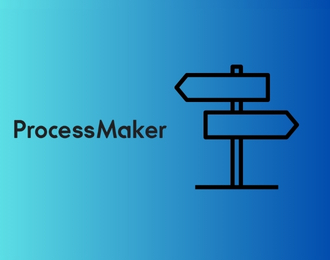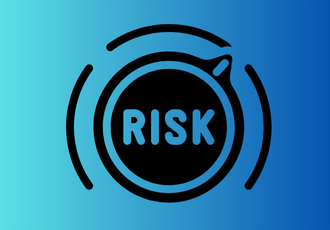What is Supplier Onboarding?
Supplier onboarding is the structured process of integrating new suppliers into a business ecosystem, ensuring they meet compliance, security, and operational requirements before beginning commercial transactions.
This process involves verifying credentials, establishing payment terms, conducting risk assessments, and granting access to necessary systems. For example, when a manufacturing company partners with a new raw material supplier, onboarding includes validating ISO certifications, defining delivery schedules, setting up purchase order systems, and aligning procurement expectations.
Without an efficient onboarding process, businesses face significant risks including supply chain disruptions, compliance violations, payment delays, and damaged supplier relationships. A streamlined approach ensures regulatory adherence, operational efficiency, and establishes a strong foundation for long-term partnerships.
Why Supplier Onboarding Matters for Business Success
An efficient supplier onboarding process is crucial for building a reliable, compliant, and performance-driven supply chain. It extends beyond administrative setup to create the foundation for smooth collaboration, risk mitigation, and long-term value creation.
Accelerates Procurement and Operational Timelines
A well-structured onboarding process ensures suppliers can be approved, activated, and ready to transact quickly. This speed is especially critical for project-driven businesses or industries with tight production schedules. Research shows that streamlined onboarding can reduce supplier activation time by up to 70%, directly impacting operational efficiency and project delivery timelines.
Strengthens Risk and Compliance Management
Early-stage vetting and documentation—including business license validation, financial health assessments, and ESG compliance verification—are critical for avoiding legal, financial, and reputational risks. According to Deloitte's 2024 Supply Chain Risk Survey, 89% of organizations experienced supply chain disruptions due to inadequate supplier vetting processes.
Improves Supplier Data Quality and Centralization
Capturing accurate supplier information during onboarding ensures reliable data throughout the supplier lifecycle. This reduces invoice errors by up to 45%, minimizes payment disputes, and eliminates duplicate vendor entries in ERP systems, supporting better decision-making across procurement, finance, and supply chain teams.
Enhances Supplier Relationships and Collaboration
A smooth onboarding experience sets the tone for positive working relationships. When suppliers experience efficient onboarding with clear expectations and easy system access, they demonstrate 23% higher responsiveness rates and improved long-term collaboration, according to procurement industry benchmarks.
Reduces Administrative Costs and Manual Workload
Automation eliminates repetitive manual steps, enabling organizations to onboard more suppliers with reduced internal effort. Companies implementing automated onboarding report 60% reduction in administrative costs and allow procurement teams to focus on value-adding activities like negotiation, innovation, and supplier development.
Enables Scalability and Global Expansion
For growing organizations or those working with international vendors, efficient onboarding becomes essential for scaling operations. A standardized, automated process ensures consistency across geographies while adapting to region-specific legal and regulatory requirements.
Essential Steps in the Supplier Onboarding Process
Supplier onboarding requires a systematic approach to ensure vendors are properly vetted, compliant, and integrated into your procurement ecosystem. Here are the seven critical steps for effective supplier onboarding:
Step 1: Supplier Registration and Initial Information Collection
What it involves: Invite suppliers to register through a digital self-service portal, collecting essential business details including company name, tax identification number, contact information, banking details, and product/service categories.
Best practices: Implement real-time data validation to catch errors early and automatically route incomplete applications for follow-up. Use progressive profiling to collect information gradually rather than overwhelming suppliers with lengthy forms.
Step 2: Compliance and Risk Screening
What it involves: Conduct automated due diligence checks including business license verification, certification validation, tax documentation review (e.g., W-9 forms), and sanctions/blacklist screening.
Best practices: Integrate with third-party databases such as Dun & Bradstreet, Thomson Reuters World-Check, or specialized ESG rating platforms. Set up automated alerts for any compliance red flags or changes in supplier risk profiles.
Step 3: Approval Workflow and Internal Review
What it involves: Route supplier submissions through predefined approval workflows involving procurement, legal, finance, and category management teams based on risk level, spend threshold, and business impact.
Best practices: Implement conditional approval rules based on supplier category, geographic region, or contract value. Use parallel approval processes where possible to reduce cycle times while maintaining proper oversight.
Step 4: Contract Signing and Document Exchange
What it involves: Distribute master service agreements (MSAs), non-disclosure agreements (NDAs), supplier codes of conduct, and other legal documents through integrated contract management systems.
Best practices: Utilize electronic signature platforms like DocuSign or Adobe Sign for faster execution. Maintain centralized document repositories with version control and automated renewal notifications.
Step 5: Payment and ERP Integration
What it involves: Automatically transfer approved supplier information to ERP or accounting systems to create vendor records, including preferred payment methods, payment terms, and secure banking details.
Best practices: Implement data mapping rules to ensure consistent information transfer between systems. Set up automated vendor master data validation to prevent duplicate entries and maintain data integrity.
Step 6: System and Portal Access Provisioning
What it involves: Grant suppliers appropriate access to procurement portals, supplier collaboration platforms, and other necessary systems based on their role and contract requirements.
Best practices: Use role-based access control (RBAC) to ensure suppliers only access relevant systems and information. Implement single sign-on (SSO) capabilities to improve user experience and security.
Step 7: Performance Metrics and Ongoing Monitoring Setup
What it involves: Establish performance monitoring mechanisms including on-time delivery rates, quality scores, contract compliance metrics, and financial stability indicators.
Best practices: Set up automated dashboards and alerts for performance deviations. Create regular review cycles and feedback mechanisms to maintain supplier engagement and continuous improvement.
Key Benefits of Robust Supplier Onboarding
A structured and efficient supplier onboarding process delivers strategic value across procurement, finance, compliance, and operational functions. Organizations with mature onboarding processes report significant improvements in supplier performance and operational efficiency.
Improved Supplier Data Accuracy and Centralization
Robust onboarding ensures supplier information—including tax details, banking information, compliance documents, and contact data—is collected accurately and stored centrally. This reduces payment delays by 40%, minimizes communication errors, and eliminates costly duplicate vendor entries across systems.
Faster Time-to-Transaction
Efficient onboarding enables suppliers to become transaction-ready quickly. With automated workflows handling approvals, documentation, and system setup, suppliers can begin delivering goods or services without unnecessary delays. Leading organizations achieve 50-70% reduction in onboarding cycle times through automation.
Enhanced Regulatory and Risk Compliance
Systematic verification of licenses, certifications, insurance, and tax documentation during onboarding ensures all vendors meet legal, financial, and ethical standards. This proactive approach reduces exposure to fraud, supply chain disruptions, and compliance violations that can cost organizations millions in penalties and reputation damage.
Reduced Operational and Administrative Burden
Automating supplier onboarding eliminates manual data entry, reduces email exchanges by 80%, and streamlines document handling. This efficiency frees procurement, finance, and legal teams to focus on strategic activities such as contract negotiation, category management, and supplier development initiatives.
Stronger Supplier Relationships and Communication
Professional and transparent onboarding creates positive first impressions and establishes clear expectations. When suppliers understand policies, processes, and performance requirements from the start, communication improves and trust develops early, leading to more collaborative long-term relationships.
Better Spend Visibility and Supplier Performance Tracking
Solid onboarding foundations enable better supplier categorization, performance metric tracking, and spend analysis. This visibility supports more informed decision-making for sourcing strategies, contract negotiations, and risk management over time.
Common Challenges in Supplier Onboarding
Despite its strategic importance, supplier onboarding presents significant challenges, especially for organizations managing high volumes, global vendors, or stringent compliance requirements. Understanding these challenges is crucial for developing effective solutions.
Fragmented Data Collection and Systems
The challenge: Supplier information is often collected via spreadsheets, emails, or disconnected portals, leading to inconsistent data quality and duplication across systems.
Impact: Without centralized data management, organizations struggle to maintain accurate supplier records, leading to payment delays, compliance gaps, and audit difficulties.
Manual and Repetitive Processes
The challenge: Many onboarding workflows rely heavily on manual steps including document requests, contract routing, and internal approvals, creating bottlenecks and increasing error rates.
Impact: Manual processes slow onboarding by 3-5x compared to automated alternatives, drain administrative resources, and increase the risk of human error in critical compliance checks.
Compliance and Regulatory Complexity
The challenge: Ensuring suppliers meet diverse local and international regulatory standards (tax laws, anti-bribery rules, ESG requirements, GDPR) becomes increasingly complex across different jurisdictions and industries.
Impact: Inadequate compliance screening exposes organizations to legal penalties, reputational damage, and operational disruptions. Healthcare and financial services face particularly stringent requirements.
Lack of Visibility and Tracking
The challenge: Without standardized workflows, teams struggle to track onboarding status, identify bottlenecks, and maintain accountability across the process.
Impact: Poor visibility leads to missed deadlines, communication gaps, extended activation times, and difficulties in reporting progress to stakeholders and auditors.
Inconsistent Supplier Experience
The challenge: Poorly structured onboarding processes create confusion when requirements vary across departments, regions, or business units.
Impact: Inconsistent experiences damage supplier relationships, reduce responsiveness, and may impact future collaboration or competitive positioning in supplier negotiations.
Delayed Time-to-Value
The challenge: Extended onboarding cycles prevent suppliers from beginning work, stalling procurement timelines and operational deliveries.
Impact: For organizations relying on just-in-time supply chains or project-based sourcing, onboarding delays directly impact project delivery, customer satisfaction, and revenue recognition.
How to Automate Supplier Onboarding Process
Automating supplier onboarding transforms the traditional paper-based, manual process into a streamlined, digital workflow that ensures compliance, efficiency, and security. Instead of relying on email exchanges, spreadsheets, and manual data entry, automation creates structured workflows that verify credentials, establish payment terms, and grant system access with minimal human intervention.
FlowForma Copilot revolutionizes workflow creation by enabling businesses to instantly generate supplier onboarding workflows using simple inputs like text prompts, uploaded process diagrams, or voice commands. This AI-powered approach ensures seamless, error-free processes that adapt to business requirements in real-time.
Step-by-Step Automation Guide
Step 1: Generate Your Workflow with AI With FlowForma Copilot, creating workflows is effortless. Simply type a prompt like "Create a supplier onboarding process with compliance checks," upload an existing process diagram, or use voice input to describe your requirements. Click "Generate" and watch as Copilot instantly structures a comprehensive process flow tailored to your specifications.
Step 2: Review and Build Your Process Once the process flow is generated, review the suggested structure including all steps, decision points, and approval gates. When satisfied with the layout, click "Build" to transform your conceptual plan into a fully interactive, executable workflow with forms, notifications, and integration capabilities.
Step 3: Customize Workflow Components Expand each section to review suggested steps, questions, and data collection points. FlowForma's intuitive interface allows seamless customization—modify forms, adjust approval hierarchies, add compliance checkpoints, or integrate with existing systems to ensure the workflow aligns perfectly with your organization's requirements.
Step 4: Implement Dynamic Business Rules Click "Add Rule" and select from various rule types including conditional routing, automatic approvals, escalation triggers, and data validation checks. These rules enable your process to respond intelligently to different scenarios, such as routing high-risk suppliers through additional approval layers.
Step 5: Configure Automation Conditions Click "Edit Conditions" to establish specific triggers that determine when automated actions should occur. For example, set conditions for automatic approval of low-risk suppliers, escalation of incomplete applications, or integration with external compliance databases.
Step 6: Define Automated Actions Once conditions are established, specify the exact actions that should occur when triggers are met. This might include sending notification emails, updating supplier status, creating tasks for team members, or pushing data to integrated systems. Click "Save" to apply these intelligent automation rules.
Step 7: Save and Secure Your Workflow After finalizing all customizations, click "Save" to securely store your workflow configuration. FlowForma maintains version control and ensures all customizations are preserved, enabling future modifications and process improvements.
Step 8: Test and Validate Process Flow Click "Test Form" to preview how the workflow operates in real-time. Enter sample supplier data and observe how the system responds based on your configured conditions and rules. This testing phase ensures the workflow performs as expected before going live.
Step 9: Deploy Your Complete Solution View your complete Digital Supplier Onboarding process, structured and ready for deployment in minutes through FlowForma Copilot. This demonstrates the platform's capability to transform simple inputs into sophisticated, enterprise-ready automated workflows that scale with your business needs.
Supplier Onboarding Best Practices for 2025
As organizations face increasing regulatory complexity and supplier diversity, implementing proven best practices ensures successful onboarding outcomes and long-term supplier relationship success.
Standardize Your Onboarding Framework
Create consistent processes: Develop standardized onboarding procedures that apply across all business units, regions, and supplier categories while allowing for necessary customizations based on risk levels or regulatory requirements.
Implement tiered approaches: Design different onboarding tracks based on supplier risk profiles—streamlined processes for low-risk suppliers and comprehensive vetting for strategic or high-risk vendors.
Leverage Technology Integration
Connect core systems: Integrate onboarding workflows with ERP systems, procurement platforms, contract management tools, and financial systems to eliminate data silos and reduce manual data entry.
Utilize API connections: Implement real-time data synchronization between onboarding platforms and third-party verification services, credit agencies, and compliance databases.
Focus on Supplier Experience
Design user-friendly portals: Create intuitive supplier self-service portals with clear instructions, progress tracking, and responsive customer support to improve completion rates and satisfaction.
Provide multilingual support: Offer onboarding materials and interfaces in multiple languages to accommodate global supplier diversity and reduce communication barriers.
Implement Continuous Monitoring
Set up ongoing compliance checks: Establish automated monitoring for changes in supplier certifications, financial status, ownership structures, and regulatory compliance throughout the relationship lifecycle.
Create performance baselines: Use onboarding data to establish initial performance expectations and benchmarks that inform ongoing supplier management and evaluation processes.
Measuring Supplier Onboarding Success
Effective measurement of onboarding performance enables continuous improvement and demonstrates value to stakeholders. Organizations should track both operational efficiency metrics and business impact indicators.
Key Performance Indicators (KPIs)
Cycle Time Metrics:
- Average onboarding completion time (target: <30 days for standard suppliers)
- Time from application submission to first transaction
- Approval workflow duration by supplier category
Quality and Compliance Metrics:
- Data accuracy rates for supplier information
- Compliance documentation completion rates
- Failed onboarding attempts and reasons
- Audit readiness scores
Efficiency Metrics:
- Cost per supplier onboarded
- Administrative time reduction percentage
- Automation rate of onboarding tasks
- Supplier self-service adoption rates
Business Impact Measurements
Supplier Relationship Quality:
- Supplier satisfaction scores with onboarding experience
- Time to first successful transaction
- Early performance indicator trends
- Supplier retention rates post-onboarding
Risk and Compliance Outcomes:
- Compliance violation incidents
- Supplier risk score improvements
- Audit findings related to onboarding
- Regulatory penalty avoidance
Technology Requirements for Automated Onboarding
Successful supplier onboarding automation requires careful consideration of technology infrastructure, integration capabilities, and scalability requirements.
Core Platform Capabilities
Workflow Management: Choose platforms that offer visual workflow design, conditional logic, parallel processing, and exception handling to accommodate complex onboarding scenarios.
Integration Features: Ensure robust API capabilities for connecting with ERP systems, procurement platforms, contract management tools, and third-party verification services.
Security and Compliance: Implement platforms with enterprise-grade security, data encryption, audit trails, and compliance certifications (SOC 2, ISO 27001) to protect sensitive supplier information.
Essential Integrations
ERP and Financial Systems: Connect with SAP, Oracle, NetSuite, or other ERP platforms for seamless vendor master data creation and maintenance.
Document Management: Integrate with SharePoint, Box, or dedicated contract management systems for centralized document storage and version control.
Verification Services: Connect with credit agencies, compliance databases, and certification bodies for automated supplier validation and ongoing monitoring.
Future Trends in Supplier Onboarding
The supplier onboarding landscape continues evolving with emerging technologies and changing business requirements. Organizations should prepare for these key trends shaping the future of supplier integration.
Artificial Intelligence and Machine Learning
Intelligent Document Processing: AI-powered systems will automatically extract and validate information from supplier documents, reducing manual review time by up to 90%.
Risk Prediction: Machine learning algorithms will analyze supplier data patterns to predict potential risks, compliance issues, or performance problems before they occur.
Smart Routing: AI will optimize approval workflows based on historical data, current workloads, and urgency levels to minimize cycle times.
Blockchain and Digital Identity
Verified Credentials: Blockchain technology will enable suppliers to maintain verified digital credentials and certifications that can be instantly validated across multiple organizations.
Smart Contracts: Automated contract execution based on predefined conditions will streamline agreement processes and ensure consistent compliance.
Enhanced Supplier Experience
Mobile-First Design: Onboarding platforms will prioritize mobile accessibility, enabling suppliers to complete processes using smartphones and tablets.
Personalized Interfaces: Dynamic user interfaces will adapt based on supplier type, region, and previous interaction history to improve usability and completion rates.
Conclusion
Efficient supplier onboarding is fundamental to building resilient supply chains, ensuring regulatory compliance, and establishing productive business relationships. This comprehensive guide has outlined the essential steps, benefits, challenges, and automation strategies that organizations need to implement successful supplier onboarding processes in 2025.
Key takeaways include: the seven critical onboarding steps from registration through performance monitoring, the strategic benefits of automation including 50-70% reduction in cycle times, and the importance of addressing common challenges like fragmented data and manual processes through technology solutions.
Your next steps after reading this article: Begin by assessing your current onboarding process to identify automation opportunities and pain points. Map out your ideal workflow using the seven-step framework provided, then evaluate technology platforms that can support your automation goals. Start with a pilot program for one supplier category before scaling across your entire vendor ecosystem.
Critical reminders: Ensure your automated workflows maintain proper compliance checks and approval controls—automation should enhance, not replace, necessary governance. Remember that supplier experience directly impacts relationship quality, so prioritize user-friendly interfaces and clear communication throughout the process.
FlowForma's no-code automation platform empowers organizations to transform supplier onboarding through AI-powered workflow generation and intelligent process automation. With FlowForma Copilot, you can create sophisticated onboarding workflows in minutes, not months, while ensuring compliance and scalability. Start your free trial today and experience how intelligent automation can revolutionize your supplier onboarding process.
.png) By
By 




